
Specifications
Length over belly, nock to nock 175.5 cm
Limbs (center handle to knee) 60.5 cm
Ears total 31 cm each
Knee to string nock 27 / 28 cm
Mid-limb width x thickness 40 x 15 mm
Weight 854 grams
General
Presented is one of only a handful of known examples of remaining bows made by the last bow making workshop that was still in operation by that time; Ju Yuan Hao. It represents the very last stage of traditional Chinese archery prior to the Cultural Revolution.
Ju Yuan Hao
Ju Yuan Hao was originally one of seventeen bowyers in the Beijing bow makers’s quarters. It was founded in 1720 by the Wang family and was run by them up to the seventh generation owner who went by the name of Xiao Wang. Addicted to opium, he was forced to give up the shop and Yang Ruilin, keen to start an archery shop, purchased the shop in 1910 for 40 silver dollars. In february 1912 the dynasty fell and the nationalists took over. Archery shops catered mainly to a military market and when the imperial archery exam was abolished in 1908, many seized to exist. In the 1930’s, only two shops remained: Changxing in Chengdu and Ju Yuan Hao in Beijing. The Changxing workshop probably closed somewhere in the 1940’s, leaving Ju Yuan Hao as the only operating shop of the time. In the 1930’s Yang Ruilin’s son, Yang Wentong, followed his father in bow making.
It was Yang Wentong that made a bow for Chairman Mao, a fact he was very proud of. But their fortune turned when Mao became increasingly intolerant against traditional elements of Chinese culture. In 1966 the profession of bowyer was denounced by the Red Guards to be bourgeois and Yang Wentong and Yang Ruilin were ordered to become carpenters instead. Their whole administration got destroyed, and only one bow remained which they cut in two in order to hide it from the Red Guards.
Bow making was seized for over 30 years until Yang Wentong started to make some bows again in his spare time. In 1998 Yang Fuxi, his third son, started to learn bow making at age 40. He only learned part of the trade and his bows, unfortunately, are further removed from the originals.
Remaining examples
Only a few bows remain up to this day: Yang Fuxi has the bow that was cut in two. An American private collector owns another example, this one is broken near the handle in the 1960's. A third example was collected by the famous Dr. Charles E. Grayson, now in the Museum of Anthropology of Missouri. Grayson’s notes state that the bow was made in the 1950’s by Yang Wentong. This bow is now in the Museum of Anthropology of Missouri, accession number MAC 1994-0668. The bow already diverges considerably from the earlier models with the use of snakeskin on the limbs. This was always birch bark on earlier bows from the 17th to early 20th century. Another striking feature of the use of brighter modern pigments, something seen on all other remaining Ju Yuan Hao bows except this one on offer.
The broken example in an American private collection. Again the use of snakeskin and new pigments is apparent and this particular bow is fitted with a wider, Mongolian style string bridge. This bow and its history have been covered in depth by its owner Jack Farrell in Glade magazine, N0.91, Spring 2001, p.69. There is another example in the GRASSI Museum für Völkerkunde (ethnological museum) in Leipzig. This example was published in an article by Jan H. Sachers in Traditionell Bogenschießen 66, November 2012, pp. 72-75. Again it features a snake skin outer limb covering and more modern bright pigments.
This bow
Construction
The construction of this example is different in that both limbs are covered with the more traditional birch bark with a black line in the center, a common construction method in the 19th century. Also it is the only example of a Ju Yuan Hao bow known to exist with ray-skin covered ears; a feature reserved for high quality bows. There is also green ray-skin at either side of the cork grip. Tell-tale signs of Ju Yuan Hao manufacture are the cherry blossoms, red communist star, and white dove. It has slender horn nocks inserted to the tips.
Conclusion
Being of typical Ju Yuan Hao construction and decoration, but bearing none of the hallmarks of known works made by Yang Wentong, I believe that this bow is made by his father, Yang Ruiling. Reasons for this belief are the many features that hark back to the earlier bows of the Manchu military, the bows only Yang Ruiling had been very familiar with. As such it is the only bow known to exist that may well be of his hand, all the others are by Yang Wentong.
It also makes it the earliest example of a Ju Yuan Hao bow that is known to be still in existence. The use of traditional, higher quality materials both confirms earlier manufacture as a greater level of understanding of the traditional Manchu bow. It comes with its original foldable string with leather nocking area and deer rawhide loops. An important and well-preserved piece of Chinese archery history.
SOLD


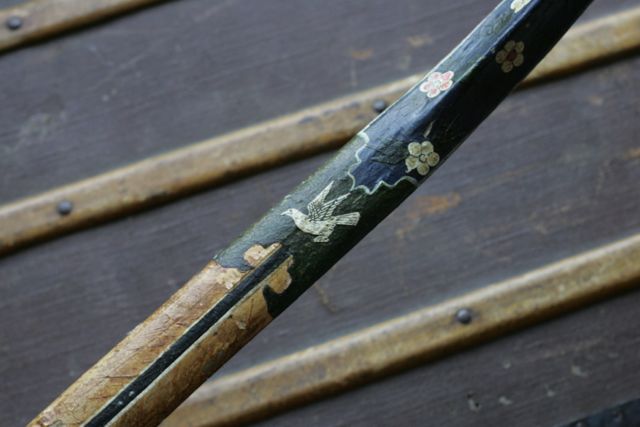
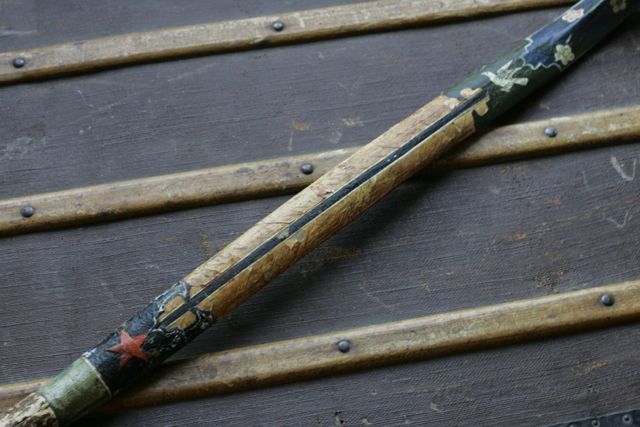
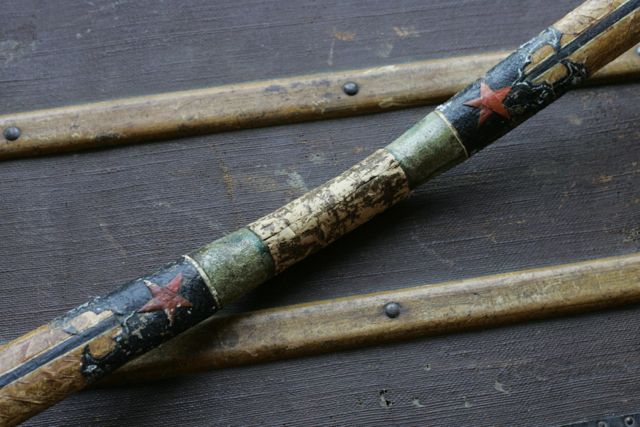
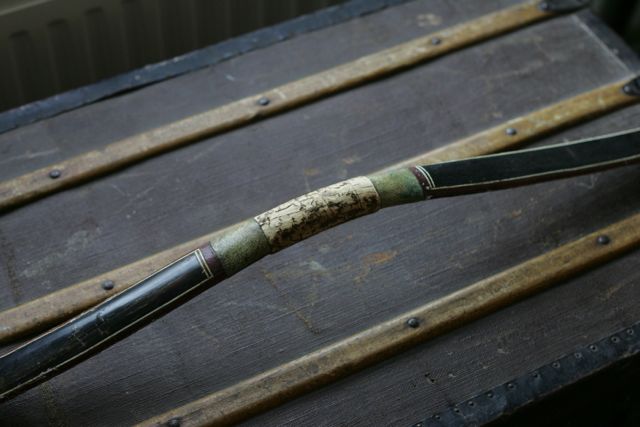

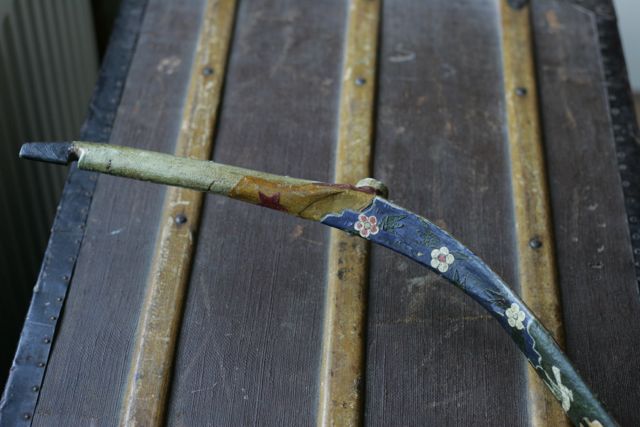

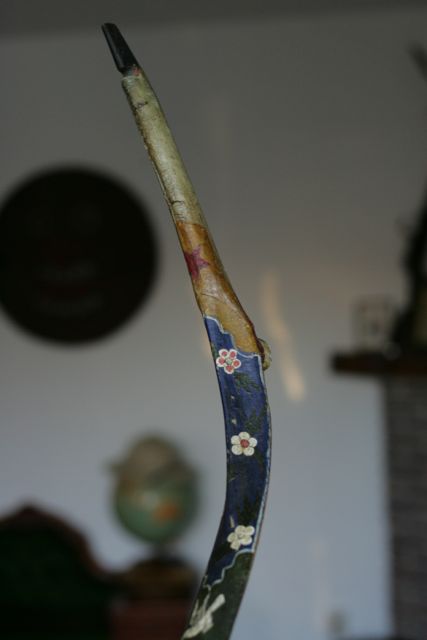




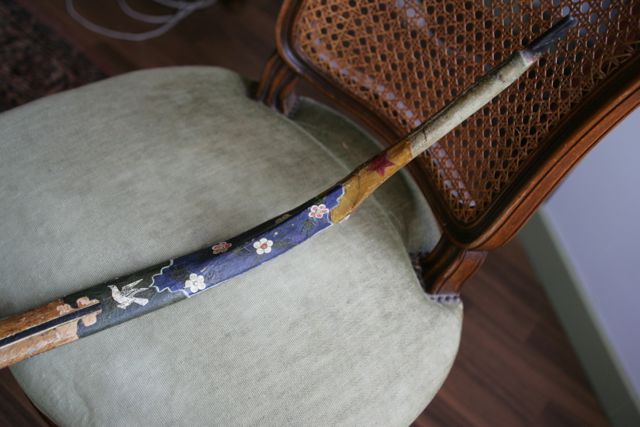
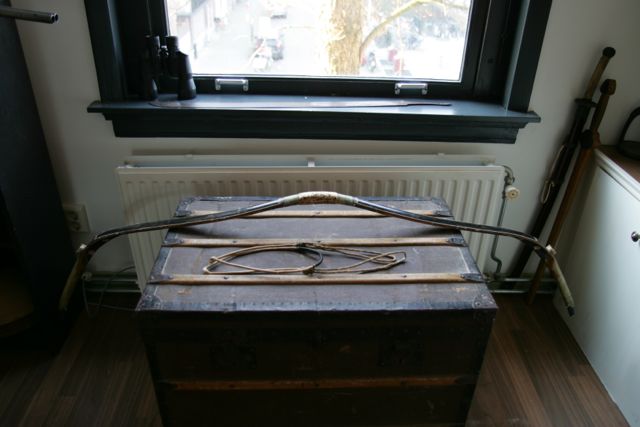
Questions? Interested?
Mail peter@mandarinmansion.com

